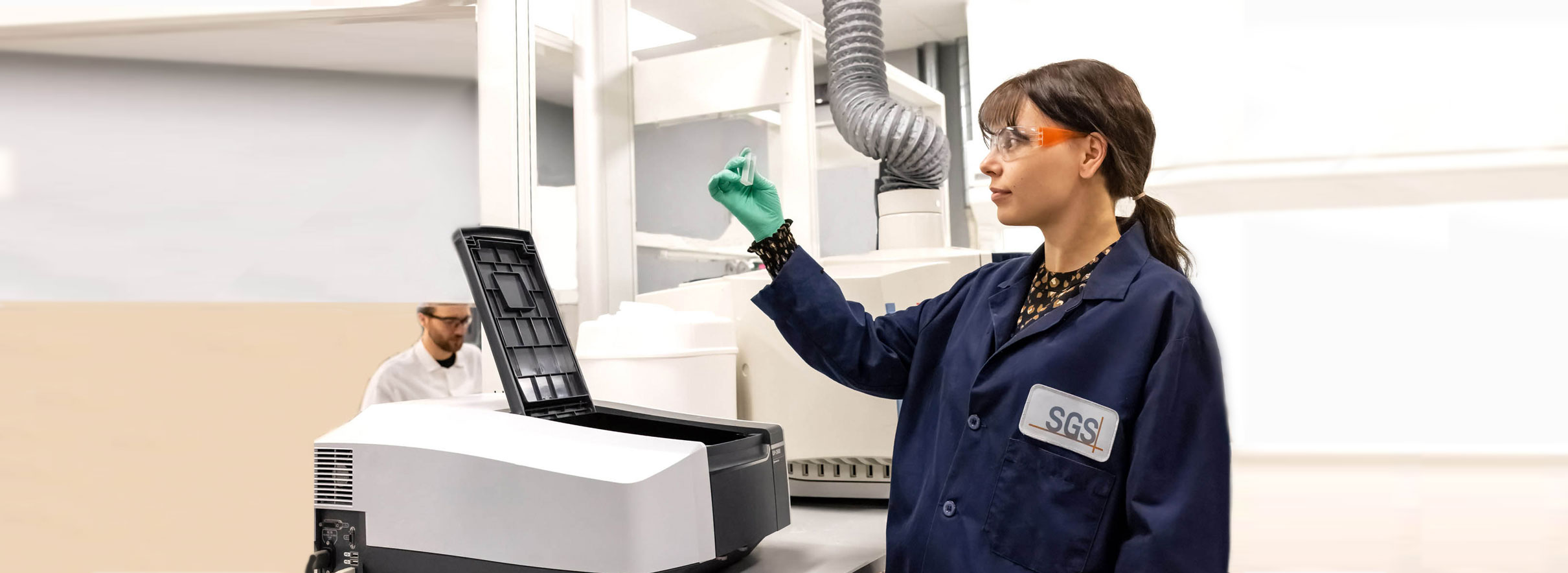
Spectroscopy
Spectroscopy Lab Services
Spectroscopy is a class of tests which study the interaction of sample specimens with energy, usually in the form of light.
About Spectroscopic Analysis
Spectroscopy tests can give information about what chemical compounds and elements are present in a sample, whether certain types of degradation have occurred in a sample, the amount and type of crystallinity present in the sample, to name a few uses.
Spectroscopy techniques can be combined with chemical reactions to perform precision, low level analysis of the amount of particular compounds, such as formaldehyde or proteins in a sample.
Spectroscopic analysis can involve radio, microwave, infrared, visible, ultraviolet, x-ray, or even gamma radiation, and each of these is suited for identifying different properties of the sample being studied.
Approaches to Spectrometry
Inductively Coupled Plasma (ICP) is a type of emission spectroscopy that uses the inductively coupled plasma (argon, in our case) to produce excited atoms and ions that emit electromagnetic radiation at wavelengths characteristic of a particular element. The intensity of this emission is indicative of the concentration of the element within the sample. The sensitivity of this technique is quite high, varying by element, from 1ppm to 10ppb.
Nuclear Magnetic Resonance spectroscopy (NMR) uses radio waves to identify the structures of polymers, copolymers, and other chemical compounds, and can quantify the major components in simple mixtures.
Infrared spectroscopy techniques such as Fourier Transform Infrared (FTIR) spectroscopy can identify specific functional groups, polymers, and additives through spectral matching, and certain techniques can test samples by touch in a non-destructive manner.
Ultraviolet-visible (UV-Vis) spectroscopy can identify certain organic functional groups, determine whether containers are appropriately light-proof, and perform quantitative analysis of dyes or functionalized compounds of interest.
X-ray Diffraction (XRD) examines arrangements of atomic structures and can determine the amount and type of crystallinity present in a sample.
X-ray Photon Spectroscopy (XPS) analyzes the surface of a sample for elemental content and can provide information on the speciation of molecules (i.e. metallic iron versus iron oxide)
Products we’ve analyzed with Spectroscopic Methods
- Medical Devices & Medical Products: Polylactic acid plates, polylactic acid screws, polylactic acid mesh, medical product packaging, implants.
- Pharmaceutical Products: Drug delivery systems, pharmaceutical packaging.
- Industrial Products: Printed circuit boards, films, fibers, adhesives, metal coatings.
- Consumer Products: Material composition identification.
Applications of Spectrometry
- Extractable content of drug delivery systems
- Surface oxidation
- Comparison of multiple products to assess similarities and differences
- Identification of material composition
- Contamination analysis
- Monitoring the progress of a chemical reaction
- Material certification
- Elemental detection
